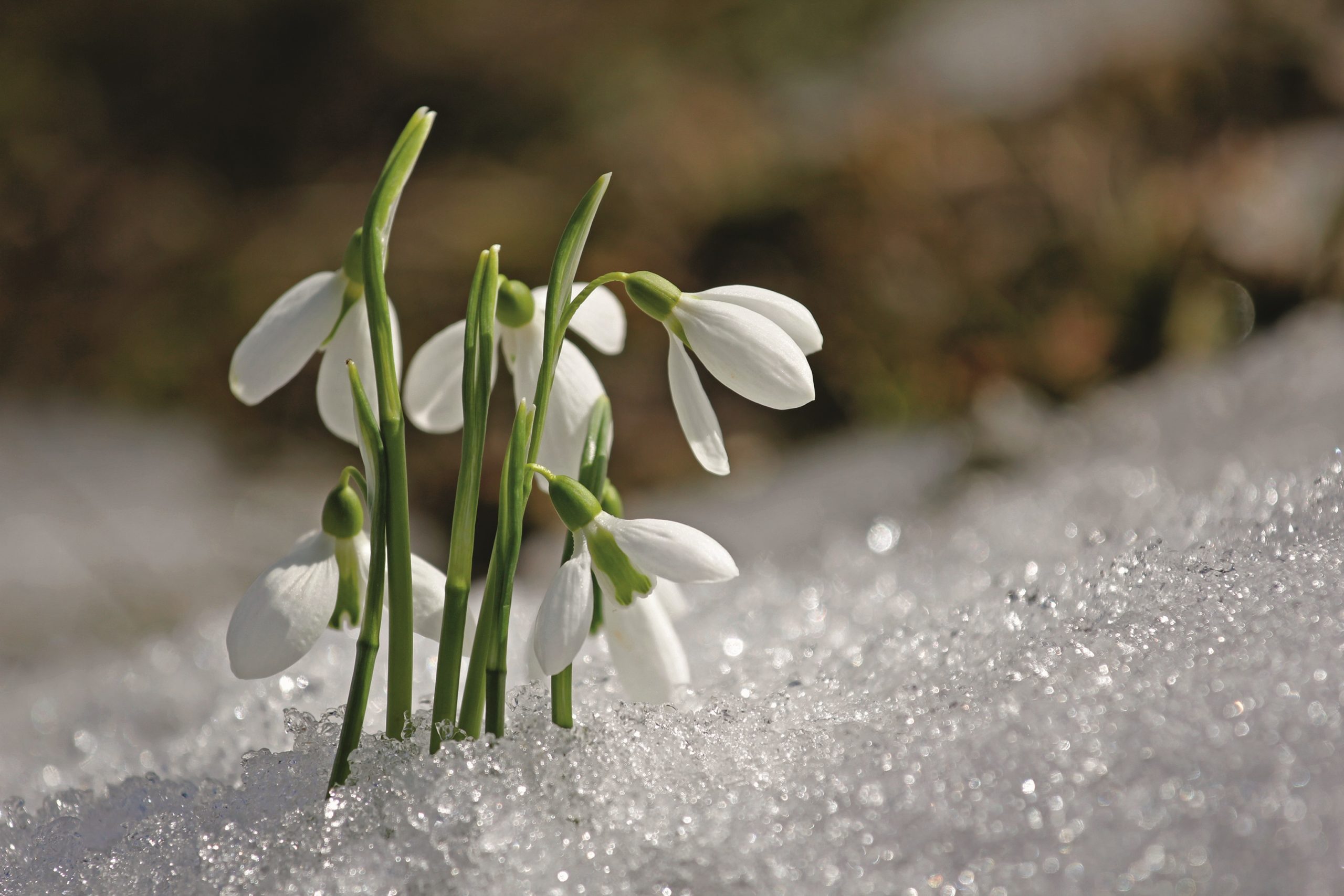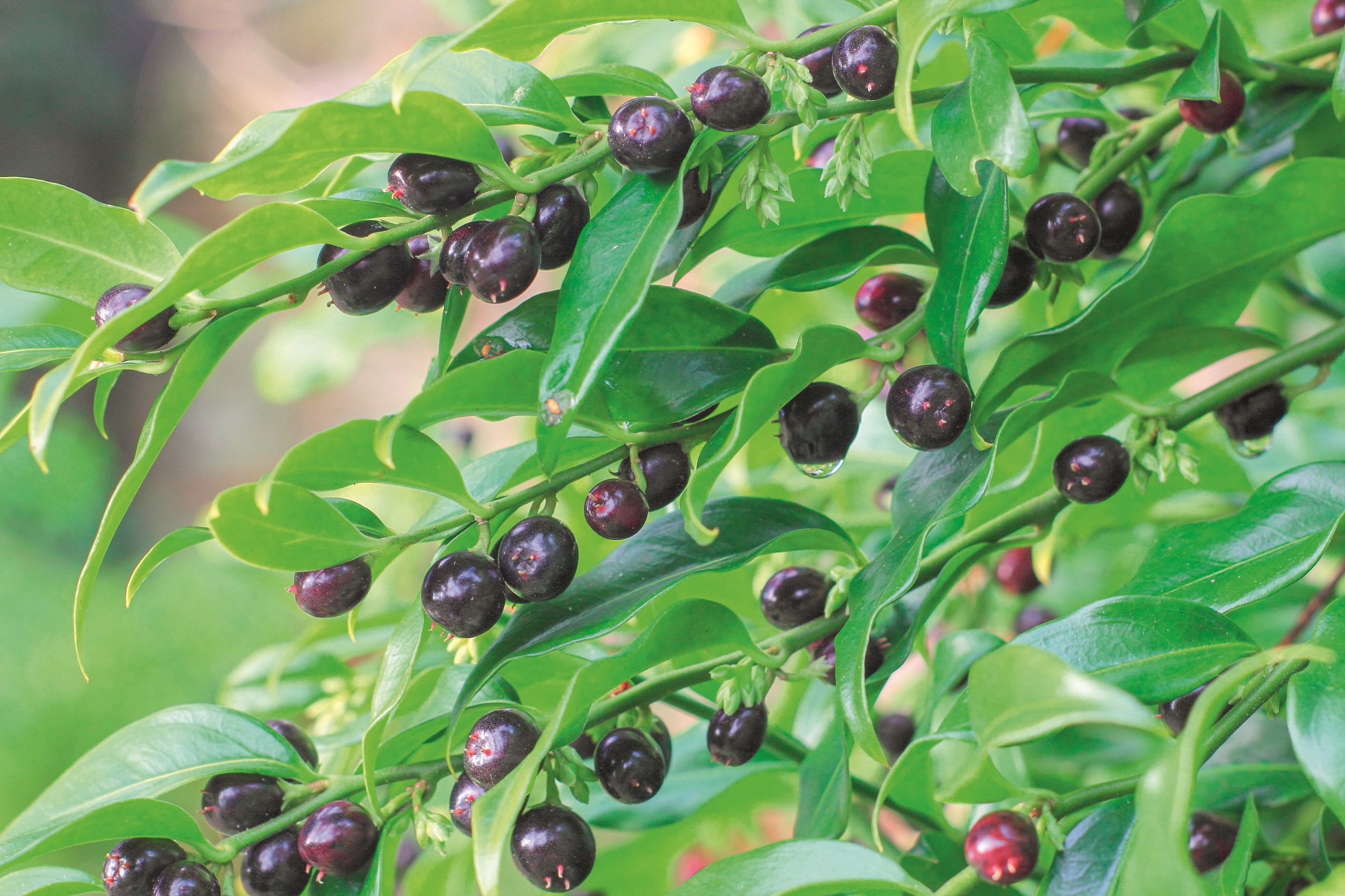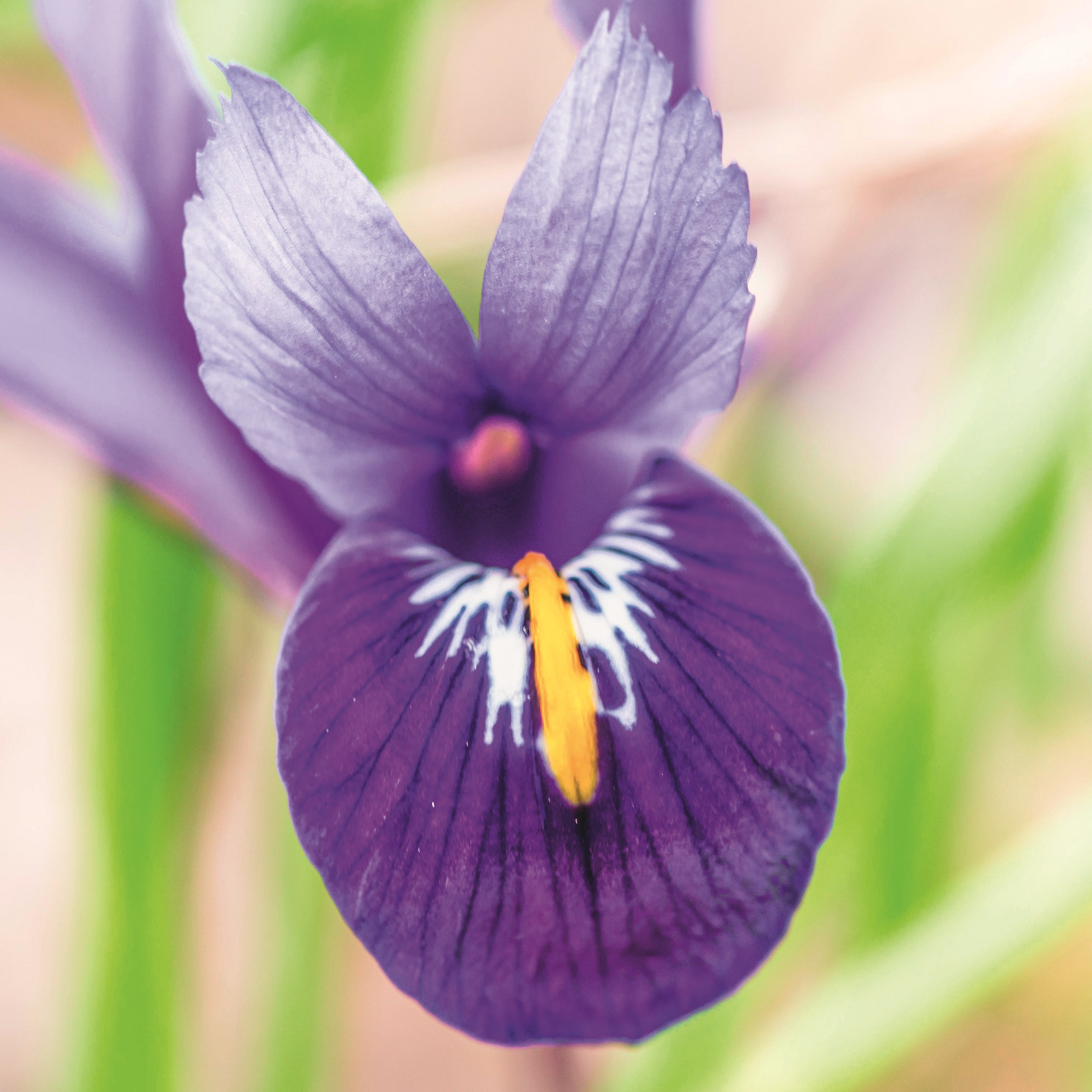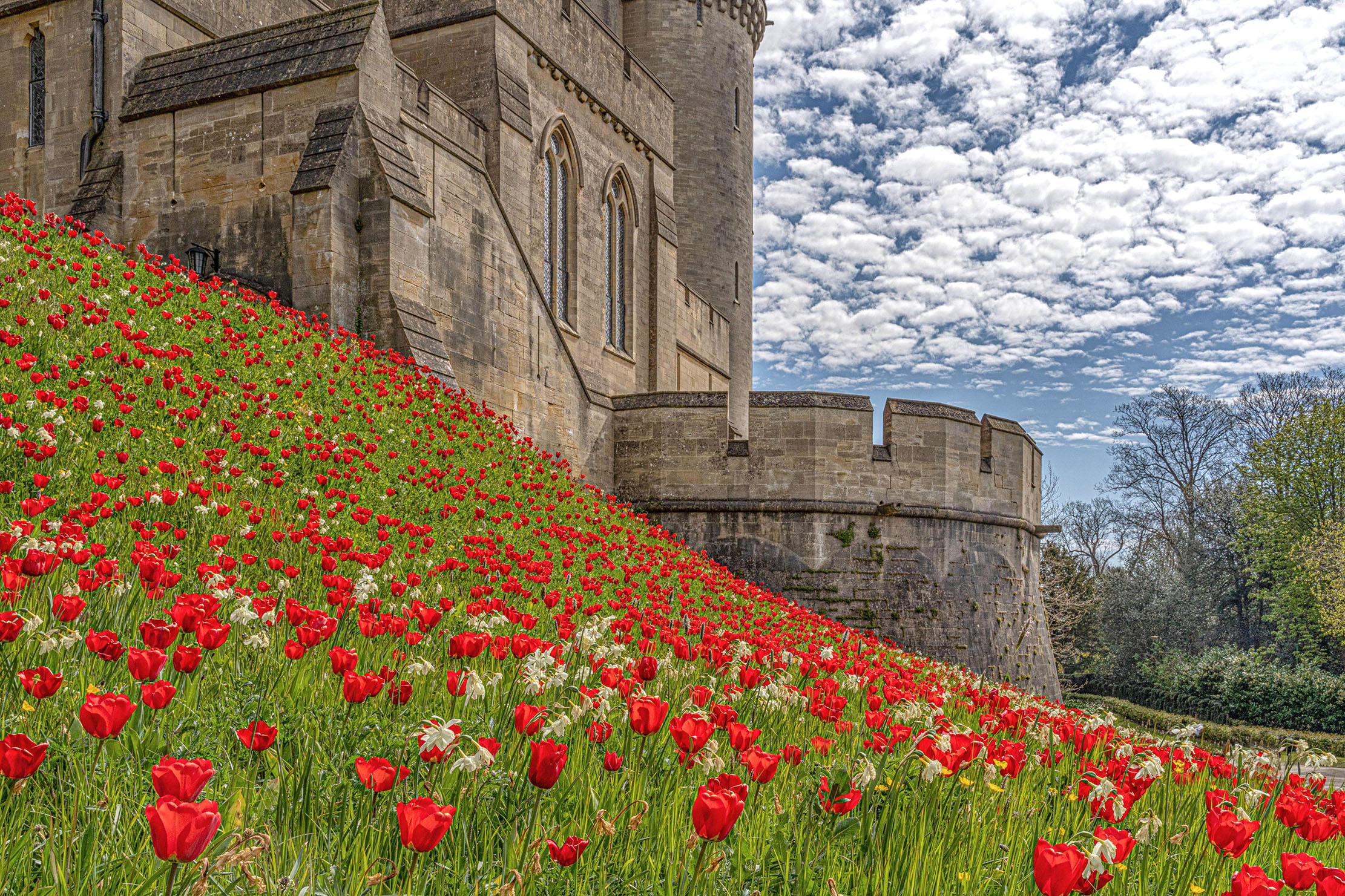How to create a sweet-smelling winter garden
Fragranced plants may be harder to come across in winter months, says Lia Leendertz, but a little effort will reap deliciously sweet-smelling rewards both inside and outside the home.


An odd thing might happen as you walk down a city street on a mild winter’s day. Everything seems dull and grey, the colourful blooms of spring and summer a distant memory, and then... a waft of something floral and citrusy, with a hint of spice, hits your nose. Surely not a flower, at this time of year?
We probably all encounter many more winter-scented plants than we realise, only partly registering their unlikely perfume. Several of them are so easy to grow that they are often incorporated into council planting schemes or placed in banks outside smart offices, only for us to give a cursory sniff and shake of our heads as we pass by.
What we are smelling is an evolutionary strategy in action. All flowers offer a small pot of sweet, sustaining nectar to reward pollinating insects for visiting them. They want insects to visit, so that they pick up a little pollen and carry it on to another flower or so they deposit a little pollen onto them in turn. Thus begins the process of fertilisation that will end in the creation of seeds, ensuring the plant’s reproduction and its line’s survival (‘Fifty shades of green’, September 13). This is what the colour and scent of flowers are really about. They don’t actually exist to please us and make our gardens pretty; that is merely a wonderful side effect.
Summer flowers are all bells and whistles — big petals and bold colours to catch the eye of anything bumbling past, plus sweet scents to put them in mind of that little pot of pollen. Yet winter-scented plants have found themselves a niche. Rather than throwing themselves into the melee of spring or summer — when the air buzzes with insects alighting on flower after flower, but competition for attention is at its fiercest — they bloom when there is very little of anything going on at all: few rivals to contend with, but also few insects to attract. Crucially, however, the number of pollinating insects that are out in the cold months is not zero.
On mild days, a few bees will emerge from their nests and hives to clean themselves and forage for a little pollen — and this is when winter-flowering plants seize their moment. They are crafty about it: they can’t produce big colourful flowers, because large, floppy petals would soon be battered by hail, winds and rain. Plants such as witch hazel, sarcococca and winter honeysuckle, with their insignificant, spidery flowers, rely instead on a sharp, citrusy scent that carries far. It floats on the air on still days, reaching out over the largest possible area and alerting those limited winter bees that there is a little nectar for them. All the bees have to do is follow the scent through the dead winter garden and find the prize.
Not so shrubby

A good number of winter’s best scented plants are hardy shrubs. They are often not lookers in summer, although they’re more unspectacular than outright ugly, so you might want to place them either behind other plants or with climbers scrambling through them.
As long as the ground isn’t hard and frozen, winter is the perfect planting time for shrubs, when the ground is moist and their roots can begin to get established before the growth spurt of spring. Prepare the planting hole well, with spadefuls of organic matter, such as well-rotted manure or garden compost, to improve drainage and ameliorate the soil structure around the roots, because, once established, they will be there for a great many years.
Exquisite houses, the beauty of Nature, and how to get the most from your life, straight to your inbox.
Hamamelis
Commonly known as witch hazel, hamamelis is a large shrub or small tree that often offers good autumn colour and can look great standing alone. Its flowers are small and spidery, but come in vibrant yellows, oranges and reds, sometimes darker at the base than the tips, making them look like little fireworks. Hamamelis has an intense citrus scent that carries right across the garden.
Viburnum x bodnantense ‘Dawn’
This is a large, upright plant that can be covered in pretty clusters of pink, highly scented flowers from November until the end of January. Stems of these blooms make a beautiful addition to winter flower bouquets and will scent the whole room.
Mahonias
Mahonia x media ‘Charity’ has a huge presence all year round, with its leaning towers of spiky, glossy, deep-green foliage. Yet it is even more impressive in winter, producing a spray of yellow flower spikes from the top of each stem — these are loved by insects at a time when there is very little pollen around. Mahonias are big plants that only really look good when given space to spread out.
Sarcococca confusa
Also known as sweet box, this is a very different shrub, perhaps the ultimate ‘smell-it-before-you-see-it’ plant. It is low growing, with lovely, glossy, but understated evergreen leaves — a perfect backdrop or foil for other plants in either summer or winter. The flowers are tiny, clustered, white and intensely scented — sweet and strong.
Chimonanthus praecox
The aptly named ‘wintersweet’ needs a tiny bit of cosseting. Grow it in a south-facing sheltered spot and on mild, sunny winter days, the delicate, pale-yellow flowers will send out a strong and delicious scent. It grows into a large shrub, but slowly.
Lonicera x purpusii
Winter honeysuckle, also known as ‘winter beauty’, is entirely unfussy. It is another unremarkable plant in summer, but it is so worth space in the garden, because it will flower from December through to April, producing beautifully scented, small white flowers, even in partial shade.

Snowdrop
We don’t think of snowdrops as scented, but several are — it’s simply quite hard to get close enough to them to give them a sniff. The varieties ‘S. Arnott’, ‘Magnet’, ‘James Backhouse’ and ‘Mrs MacNamara’ all have a beautiful honeyed smell, although you might notice it more if you pick a small bunch and bring them indoors. Plant snowdrops not long after flowering time — they do best when planted ‘in the green’, which means when their foliage is still green, rather than as dry bulbs. Many specialist snowdrop sellers offer them in bunches in this state.
Crocus
Crocuses are best planted in autumn and they, too, are sweetly scented. Although you are unlikely to catch a direct waft, they will softly perfume the air on milder days, an olfactory reminder that spring is coming — something that is absolutely worth having in your winter garden.
Winter iris
Some of the miniature winter irises are also subtly scented, perhaps the best one being Iris reticulata ‘Harmony’, which has delicate blue flowers. Plant the bulbs in autumn, in shallow pots to place on garden tables as they flower — or to bring temporarily indoors.
Lia Leendertz is the author of ‘The Almanac: A Seasonal Guide to 2024’ (Gaia, £12.99)
It’s beginning to smell a lot like Christmas
Narcissus ‘Tête-à-tête’
Pop ‘Tête-à-tête’ bulbs into a pot — or even a vase of pebbles and water — and they will grow and flower, producing beautiful spring-scented blooms in the depths of winter.
Hyacinths
Hyacinths take a little more fuss than ‘Tête-à-têtes’, requiring a period in a dark, cool place before being brought out to flower on your windowsill. The intense scent of the coming spring that they bring is worth it.
Bay, rosemary and sage
Cut festive herbs and make them into bundles tied with ribbon, ready to use in your Christmas cooking, to give to friends or simply to hang over the fireplace to scent the room.
Pomanders
A pomander is an orange tied around with ribbon and then studded all over in cloves. Place them around your home to make the air beautifully festive.
Citrus peel
Every time you eat an orange or a clementine, keep the peel. Let it dry out, then use it as a handy firelighter — the zesty oils will be released and smell delicious.
Scented logs
Apple, cherry and pear logs are gently fruity, with mild and sweet scent when burning; oak has a classic, earthy smoked fragrance and cedar is warm and woody.

The Newt, Somerset: An 18th-century walled garden with the finest display of trained apples
Nowhere else in the country has a finer display of trained apples than the 18th-century walled garden at The Newt

Alan Titchmarsh: The most spectacular flowers of spring are easy, guaranteed to flower — and now is the time to plant them
Alan Titchmarsh doesn't like tulips. He loves them.

Inside the National Trust's secret nursery
Charles Quest-Ritson was invited in to the National Trust's top-secret plant nursery. Here's what he discovered.
Country Life is unlike any other magazine: the only glossy weekly on the newsstand and the only magazine that has been guest-edited by His Majesty The King not once, but twice. It is a celebration of modern rural life and all its diverse joys and pleasures — that was first published in Queen Victoria's Diamond Jubilee year. Our eclectic mixture of witty and informative content — from the most up-to-date property news and commentary and a coveted glimpse inside some of the UK's best houses and gardens, to gardening, the arts and interior design, written by experts in their field — still cannot be found in print or online, anywhere else.
